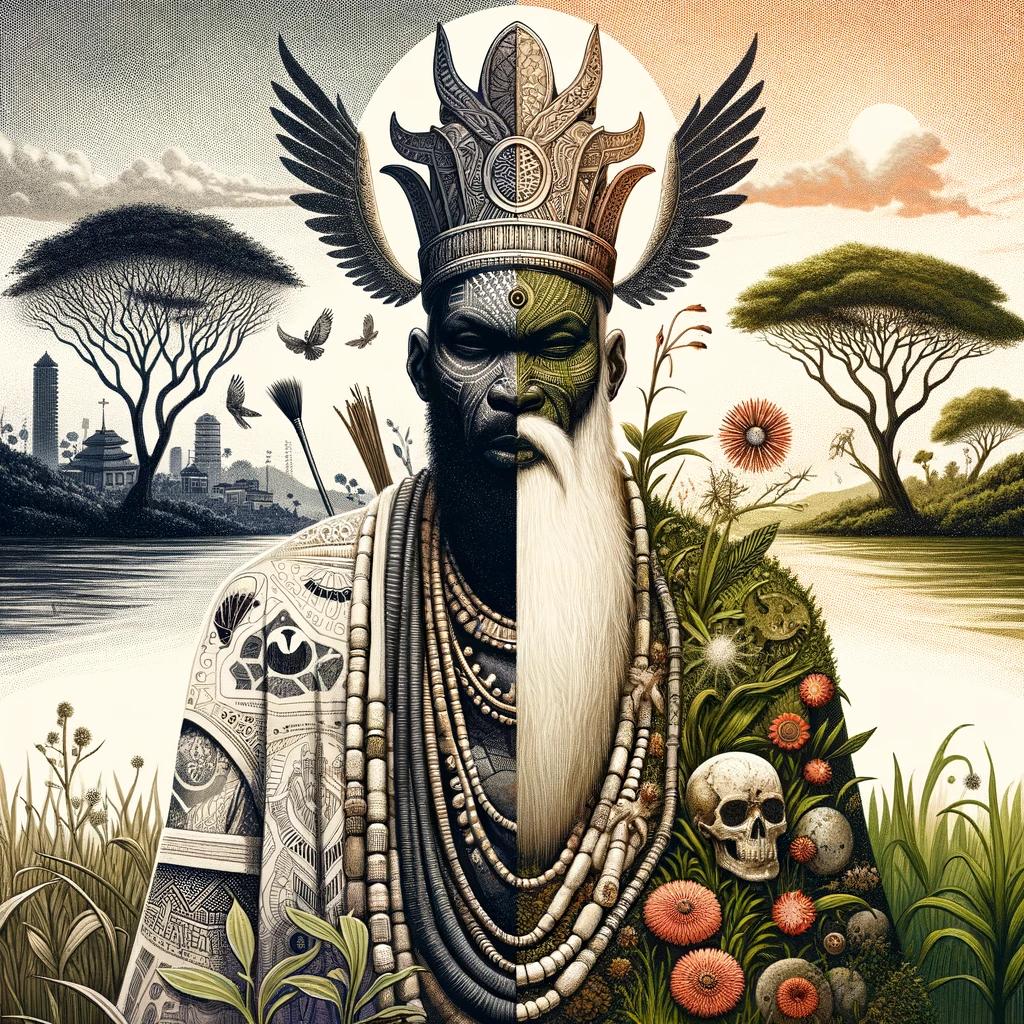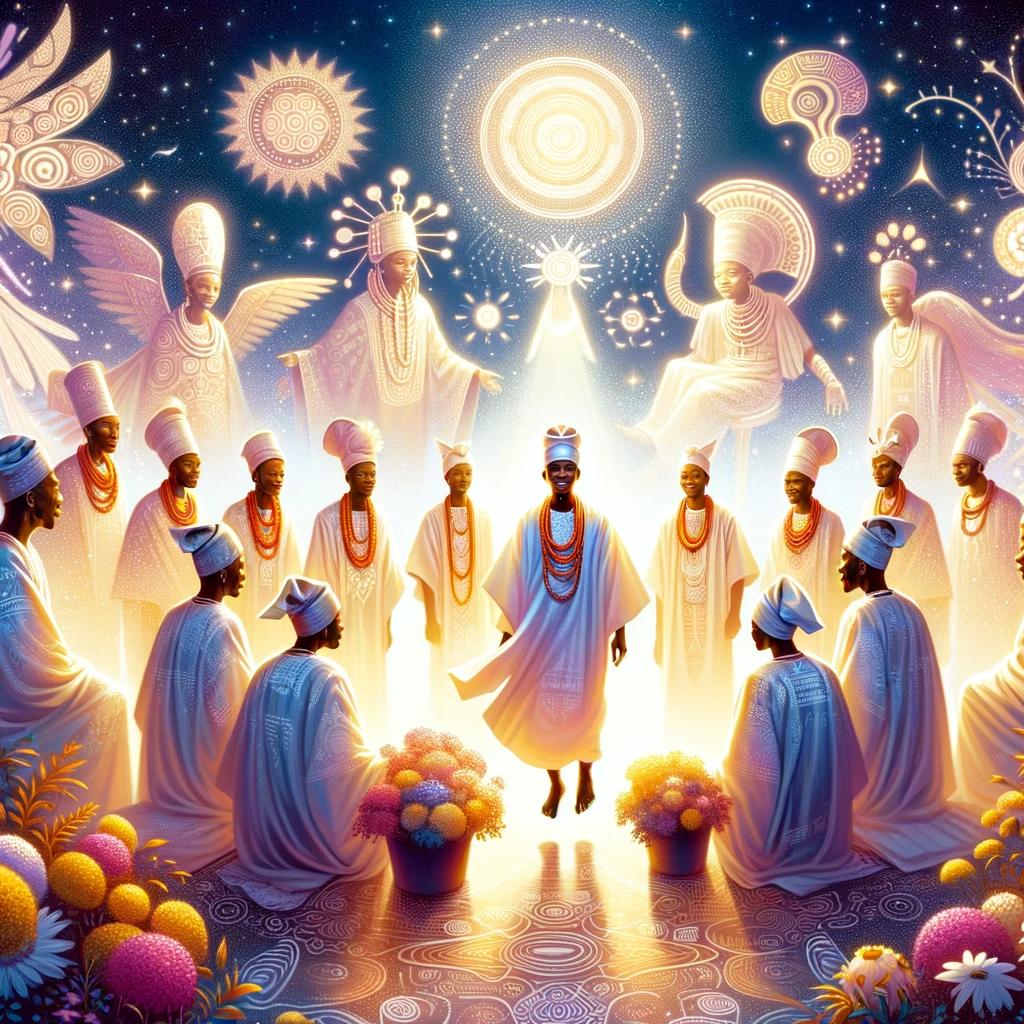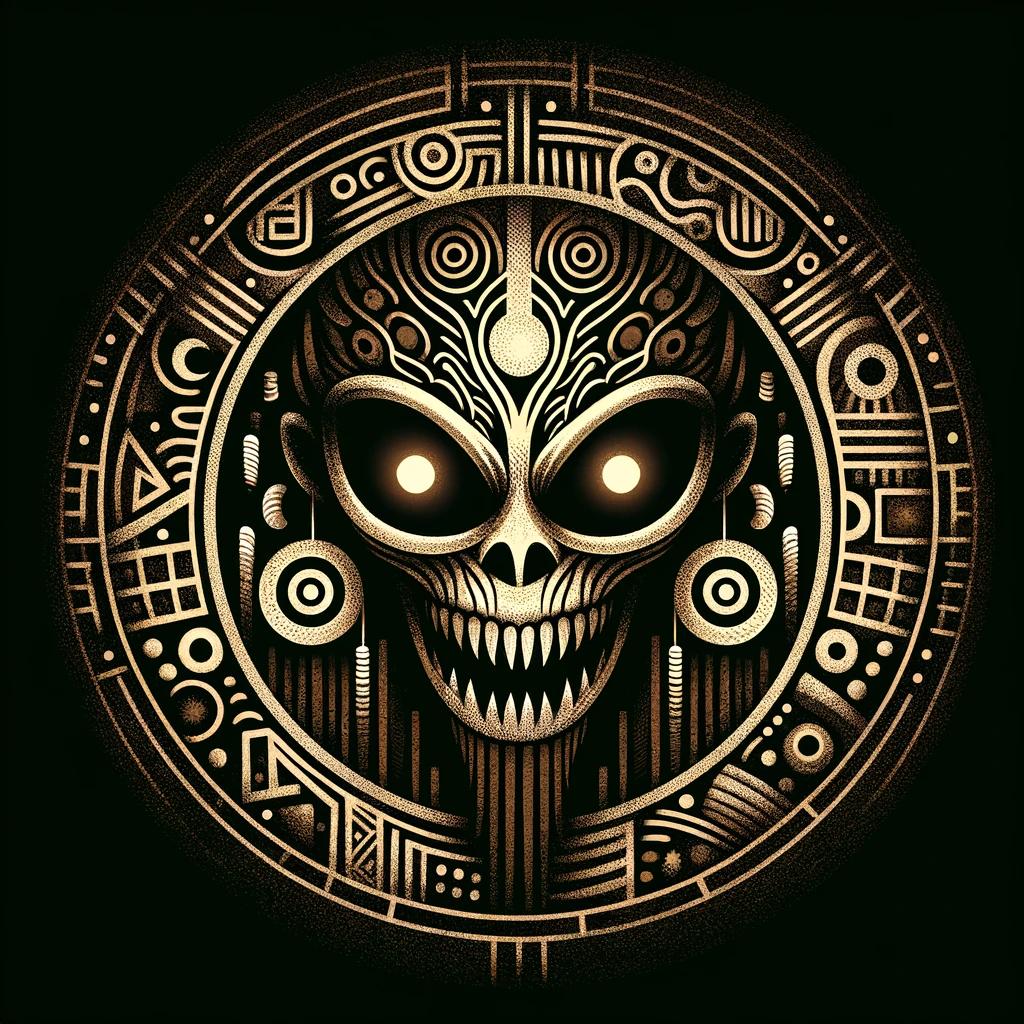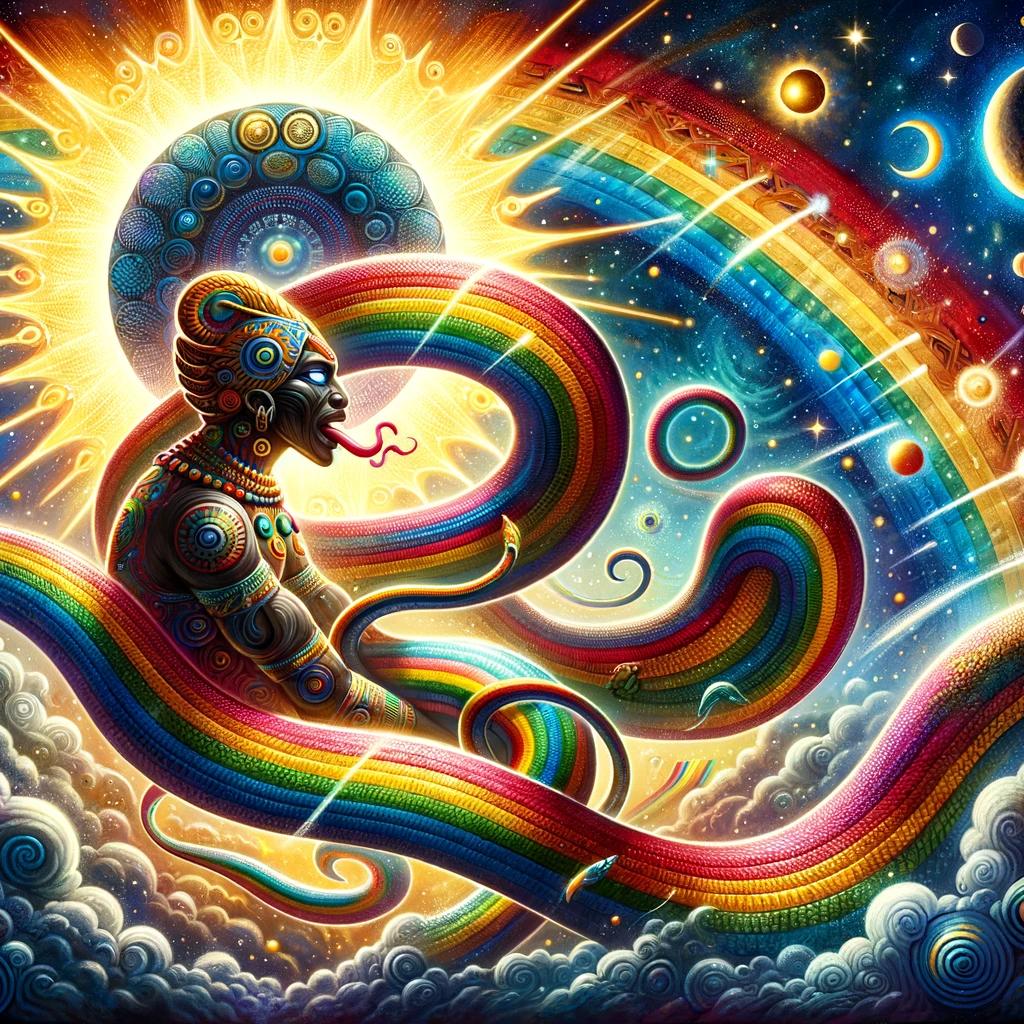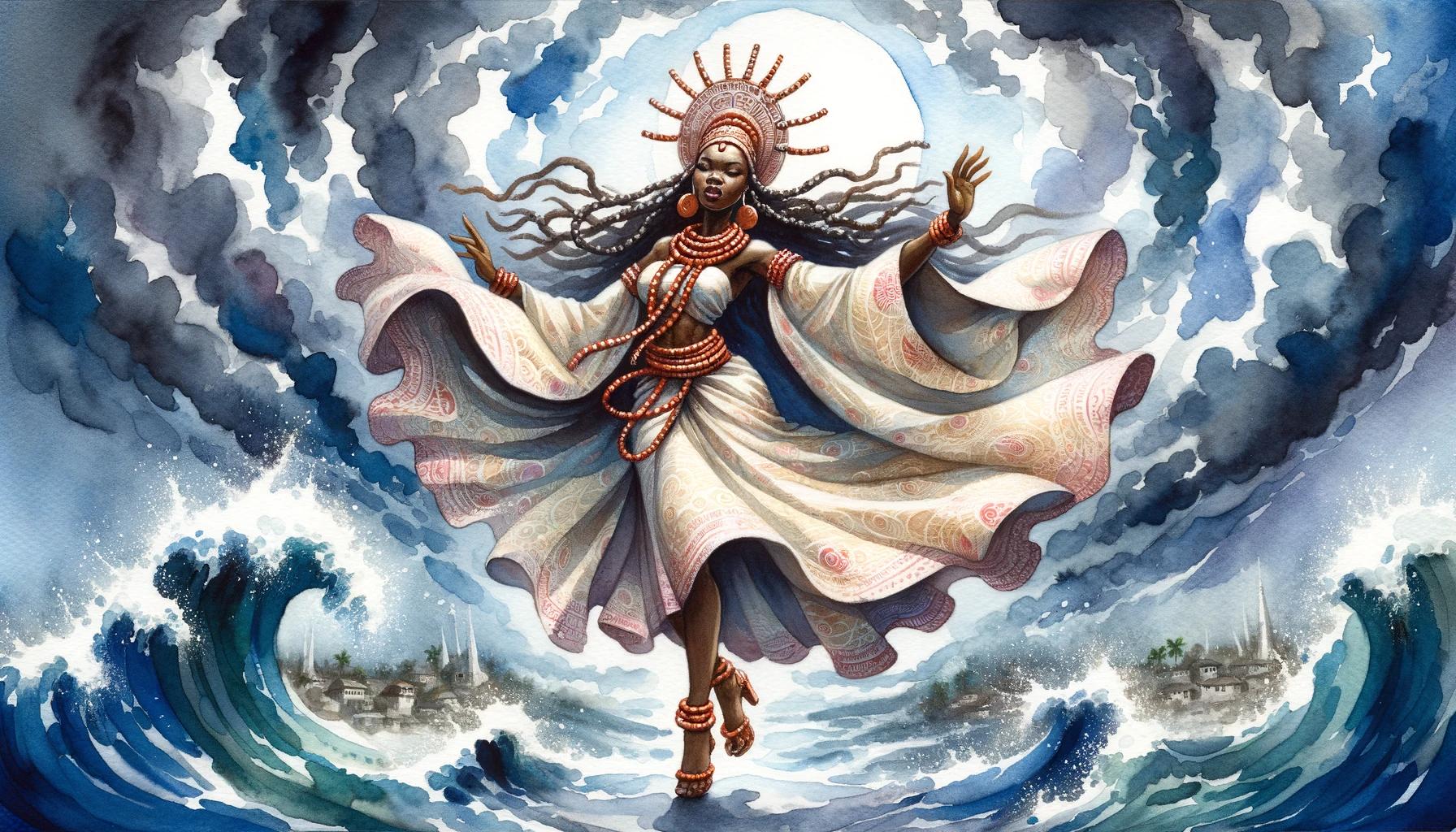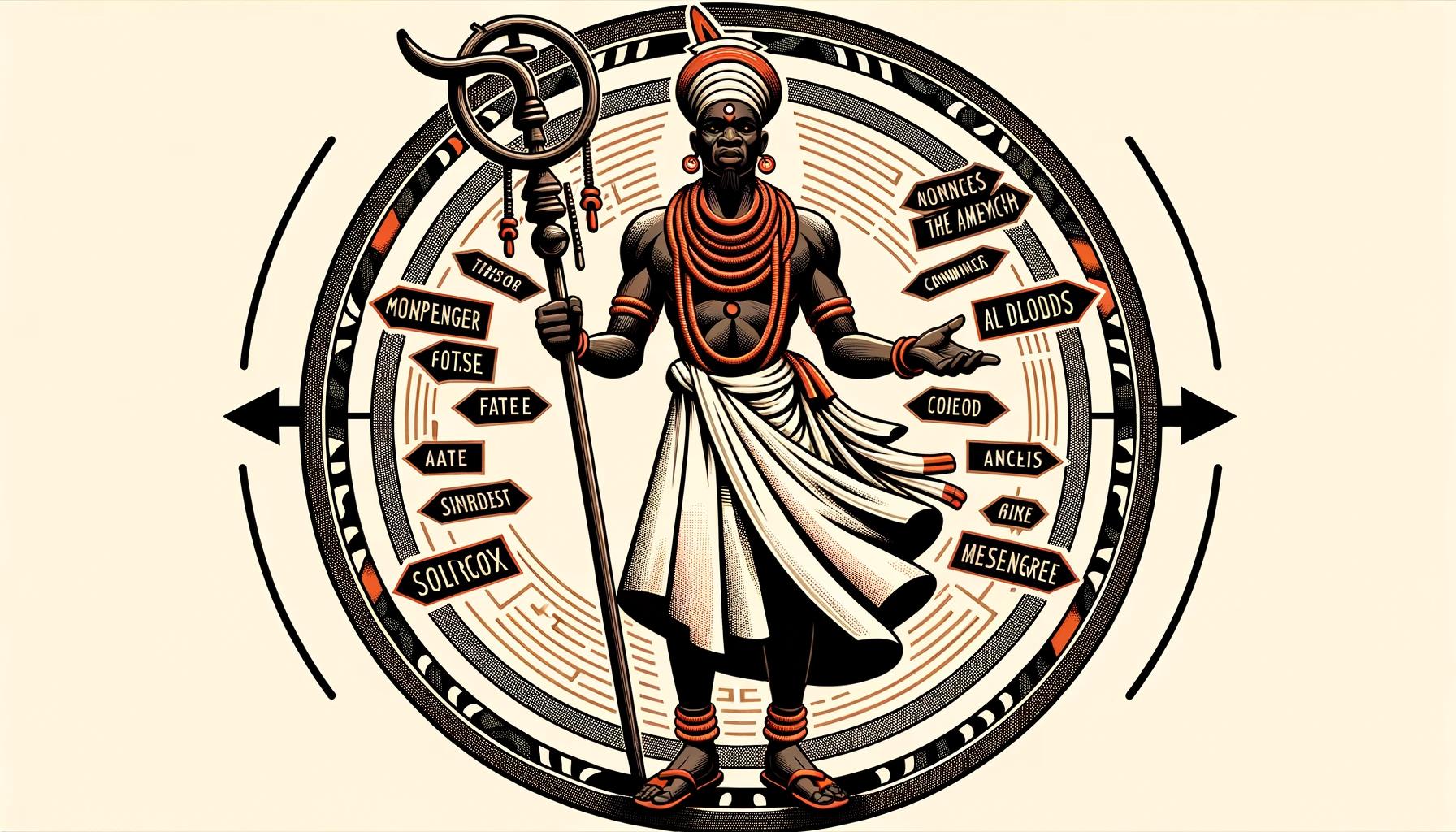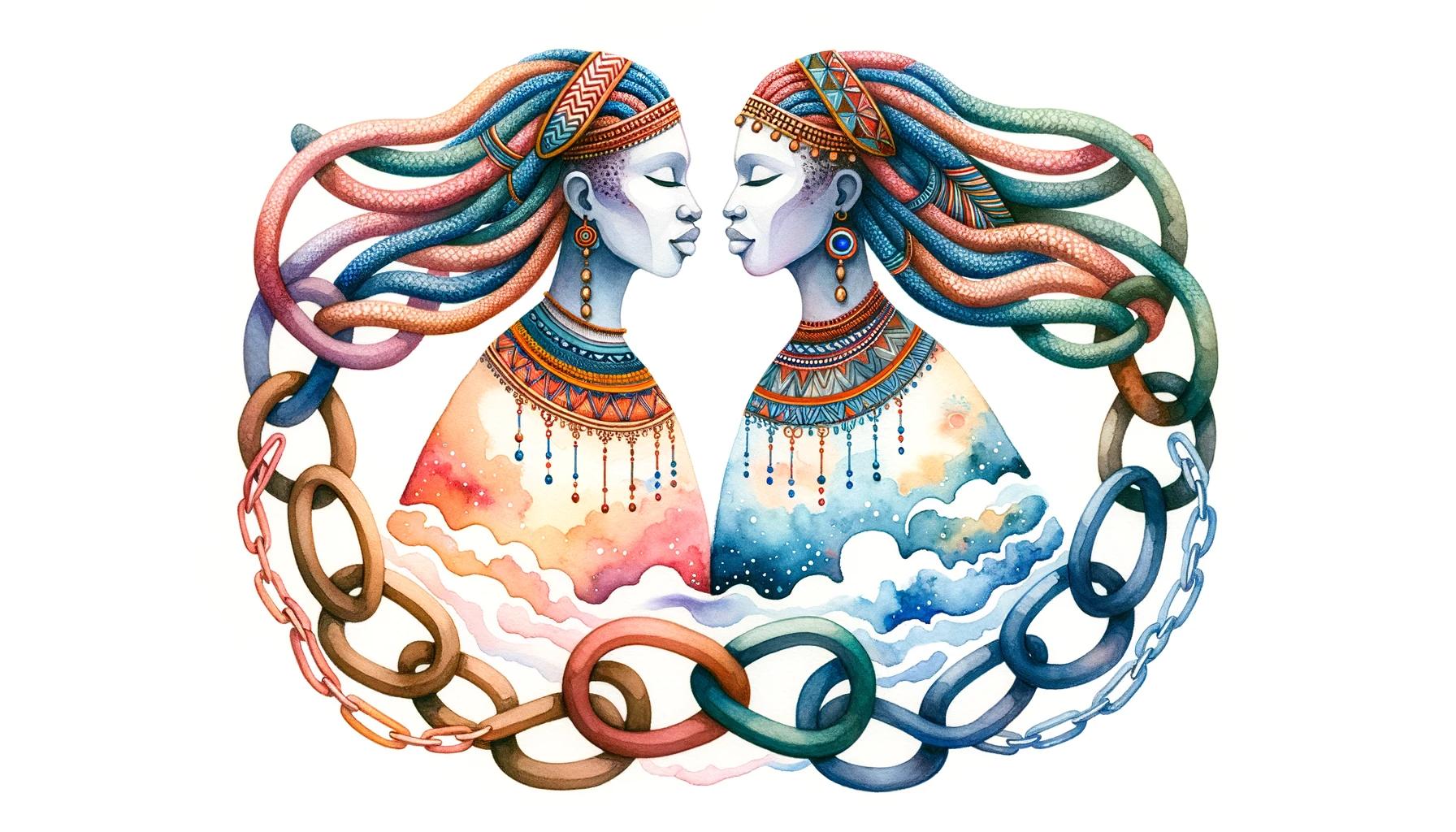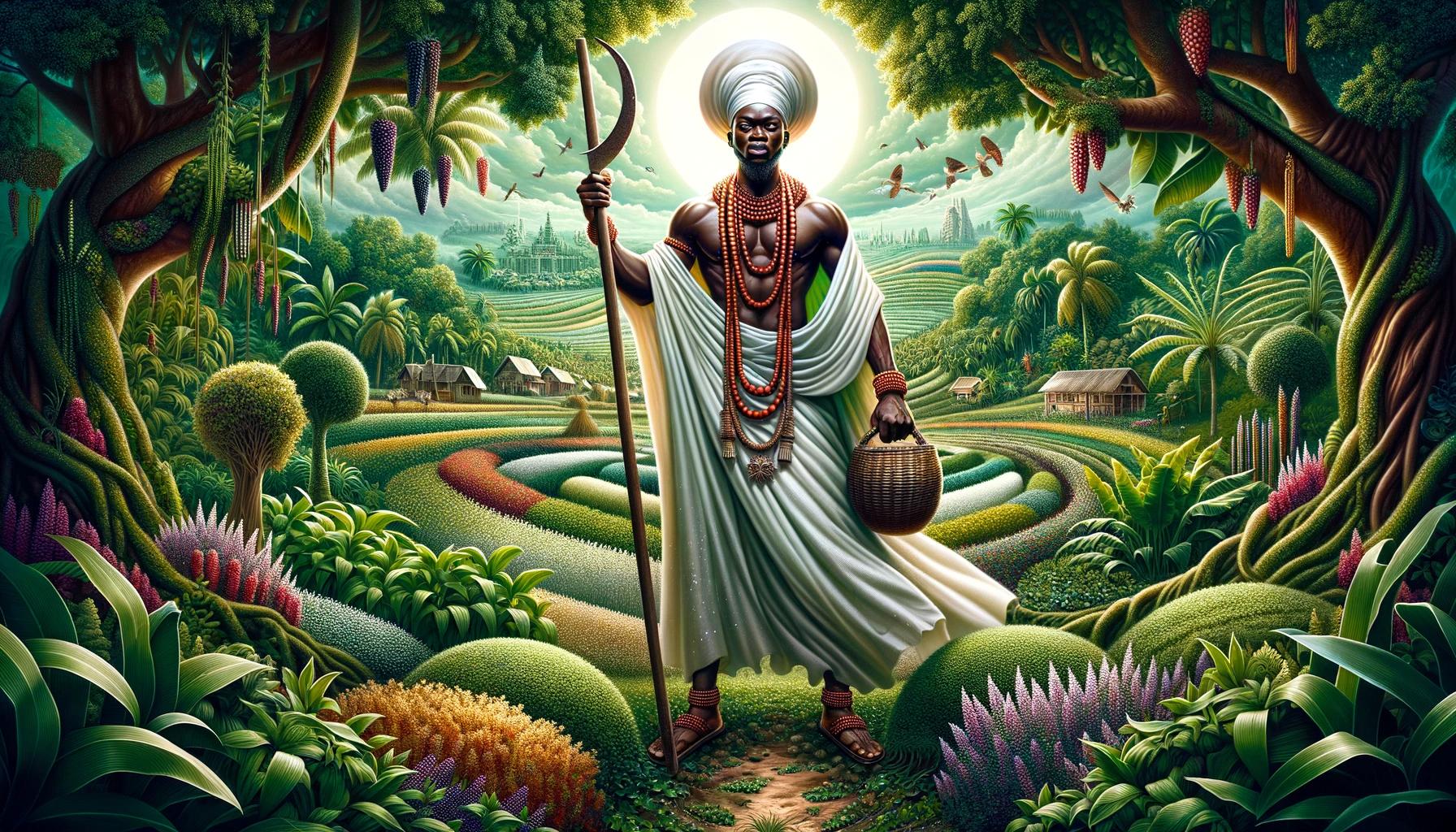‘African God Babalu Aye: A Guide to the Healing Deity in Yoruba Religion’
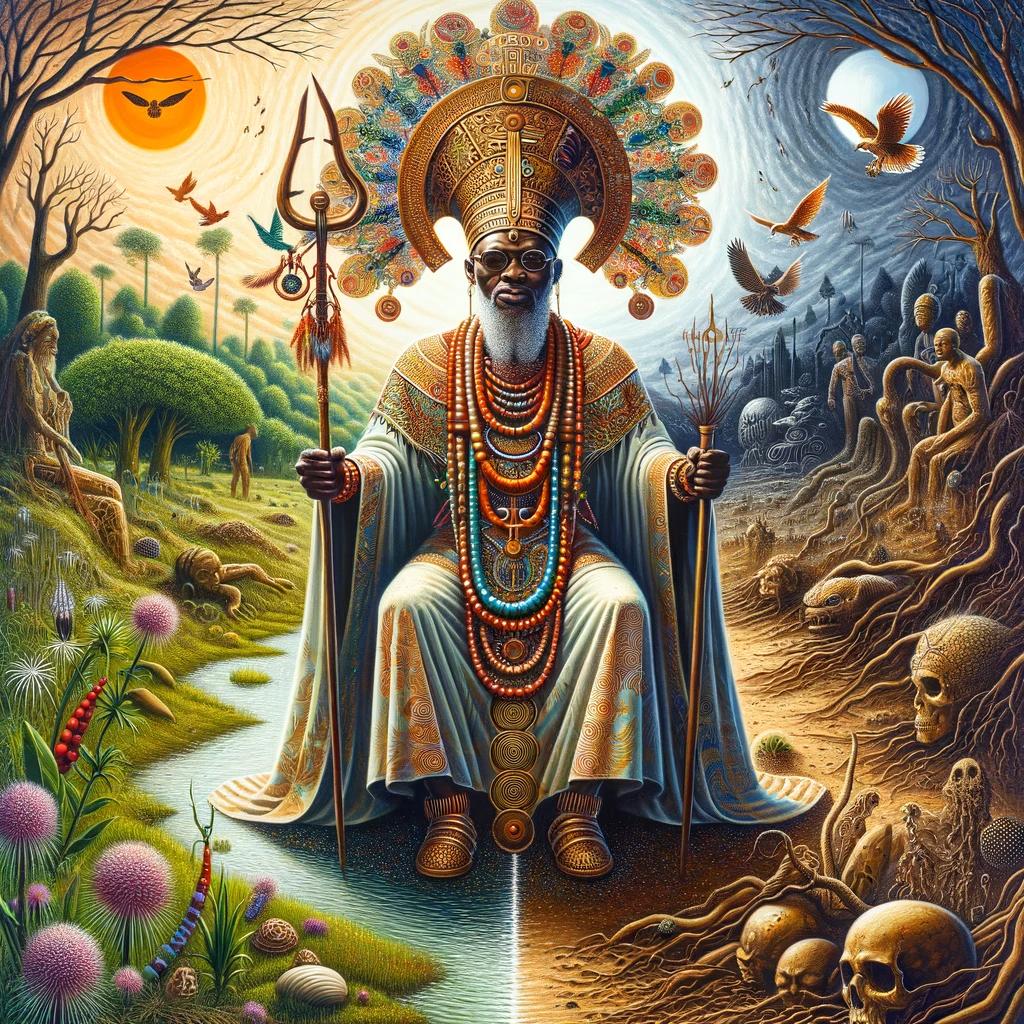
Babalu Aye, the African god of healing and disease, holds great significance in Yoruba religion. Associated with skin conditions, epidemics, and ailments, Babalu Aye is revered for his ability to cure illnesses.
Rituals, offerings, and ceremonies are dedicated to this deity in various Afro-Caribbean traditions like Santeria. Babalu Aye’s cultural representation extends to art, music, and literature, showcasing his symbolic and elemental connections.
In modern society, Babalu Aye continues to influence African diaspora communities and healthcare practices. However, controversies and misconceptions also surround this deity.
Associated Attributes and Powers of Babalu Aye
Babalu Aye as a Healing Deity
Babalu Aye is revered as a powerful deity of healing within the Yoruba religion. As a manifestation of the supreme god Olodumare, Babalu Aye possesses the ability to cure diseases and ailments.
He is sought after for his expertise in treating various illnesses, especially those of infectious nature and skin conditions. Believers turn to Babalu Aye for his healing touch and miraculous interventions in restoring health.
Babalu Aye’s Connection to Disease and Illnesses
Babalu Aye’s domain extends to diseases, providing divine understanding and aid to those suffering. He is closely associated with infectious diseases, epidemics, and airborne illnesses that can potentially cause widespread harm.
Babalu Aye’s worshippers look to him for guidance and protection against the devastating effects of these afflictions.
Babalu Aye’s Association with Skin Conditions and Epidemics
Skin conditions hold a significant role in Babalu Aye’s representation. He is particularly associated with diseases affecting the skin, such as inflammations and infections. Additionally, Babalu Aye’s influence extends to epidemics, which can pose grave threats to communities.
Through rituals and offerings, devotees seek his assistance in both preventing and curing such ailments.
Worship and Practices Related to Babalu Aye
Worship of Babalu Aye involves a rich array of rituals and practices that are deeply intertwined with Yoruba culture and Afro-Caribbean traditions. Here, we explore some of the key elements associated with the veneration of this powerful deity.
Rituals and Offerings for Babalu Aye
Devotees of Babalu Aye engage in various rituals and offer specific items as a means of seeking the god’s favor and healing abilities. These rituals often include the lighting of spiritual candles, the use of essential oils, herbs, and roots, as well as the burning of incense and resins.
Additionally, amulets and talismans are employed, believed to provide protection and channel the deity’s power.
List of typical offerings made to Babalu Aye:
- Fruits such as bananas, oranges, and coconuts symbolizing nurturing and vitality
- Grains like corn and rice representing abundance and sustenance
- Meats, particularly poultry and pork, symbolizing sacrifice and gratitude
- Liquids such as water, rum, or palm wine, seen as purifying and cleansing
Ceremonies and Festivals Honoring Babalu Aye
Babalu Aye is celebrated through various ceremonies and festivals, which provide opportunities for devotees to express their gratitude and seek blessings.
One such ceremony is the Awan, a ritualistic gathering where sacrifices are offered, and sacred foods are shared among the participants. It is a time for collective worship, prayer, and reflection on the healing powers of Babalu Aye.
Festivals dedicated to Babalu Aye often occur in conjunction with other African and Afro-Caribbean religious events. These festivities involve vibrant music, dance, and vibrant attire. During these celebrations, devotees pay homage to Babalu Aye, seeking his protection from illnesses and giving thanks for his healing miracles.
Babalu Aye in Santeria and Other Afro-Caribbean Traditions
Babalu Aye holds a significant place in Santeria, an Afro-Caribbean tradition that blends elements of Yoruba religion with Catholicism. In Santeria, Babalu Aye is often associated with Saint Lazarus, symbolizing the harmonious fusion of Yoruba and Catholic beliefs.
Followers of Santeria honor Babalu Aye through prayers, songs, and rituals, seeking his assistance in matters of health and well-being.
Furthermore, Babalu Aye’s influence extends beyond Santeria and can be found in other Afro-Caribbean traditions such as Candomble and Palo.
In these practices, Babalu Aye is accorded similar reverence and invoked for healing, protection, and guidance.
Through these worship and practices, devotees of Babalu Aye establish a profound connection with the African god, seeking his benevolence and invoking his healing powers.
Cultural Significance and Representation of Babalu Aye
The cultural significance of Babalu Aye extends beyond religious practices and rituals. This section explores how Babalu Aye is represented in art, music, and literature, as well as the symbolism and iconography associated with this revered deity.
Babalu Aye in Art, Music, and Literature
Babalu Aye’s presence can be found in various forms of artistic expression. Paintings, sculptures, and other visual artworks depict Babalu Aye with his distinct attributes, such as his crutches or his facial markings.
These artistic representations capture the essence of Babalu Aye’s connection to healing and disease, offering a visual narrative of his powers and significance.
In the realm of music, Babalu Aye is often celebrated through rhythmic beats and soulful melodies.
His influence can be heard in Afro-Caribbean genres, such as salsa, where songs pay homage to the healing and protective qualities attributed to Babalu Aye. The lyrics often reflect the struggles of human suffering and the hope for divine intervention.
Literature also showcases the cultural impact of Babalu Aye. African and Afro-Caribbean authors incorporate Babalu Aye into their stories and poetry, exploring themes of healing, spirituality, and the human experience. These literary works shed light on the significance of Babalu Aye within the cultural fabric of the communities that revere him.
Symbolism and Iconography of Babalu Aye
The symbolism surrounding Babalu Aye is rich and multifaceted, encompassing both visual and metaphorical elements. One of the prominent symbols associated with Babalu Aye is the crutch, which represents his physical limitations caused by the diseases he holds.
This symbol serves as a reminder of the fragility of human existence and the power of healing.
Iconography plays a significant role in the representation of Babalu Aye. His depiction often includes intricate facial markings, which symbolize his connection to disease and his ability to heal.
The markings are a visual representation of the transformative power of Babalu Aye, as he is believed to cleanse and purify those who seek his intervention.
Babalu Aye’s Connection to Nature and the Elements
Babalu Aye’s connection to nature and the elements is a vital aspect of his representation.
He is often associated with earth, symbolizing grounding and stability. The earth is believed to absorb negative energy and provide healing properties, showcasing Babalu Aye’s role as a conduit for restoration.
Additionally, Babalu Aye’s association with the elements manifests in the symbolism of heat and fire. Fever and heat are seen as an integral part of healing and purging diseases. It is believed that the warmth generated during these processes aids in expelling illnesses from the body, emphasizing the transformative power of Babalu Aye in restoring health.
Overall, the cultural significance of Babalu Aye can be seen through various artistic expressions, symbolism, and his connection to nature and the elements. This representation highlights the profound impact Babalu Aye has on the communities that revere and celebrate his healing powers.
The Influence of Babalu Aye in Modern Society
Babalú Aye, the African god of healing and disease, continues to have a significant impact on modern society, particularly within African diaspora communities. His presence is felt in various aspects, including cultural practices, healthcare, and the exploration of controversies and misconceptions surrounding his worship.
Babalú Aye in Contemporary African Diaspora Communities
In contemporary African diaspora communities, Babalú Aye holds a central position in religious and spiritual practices. His worship has transcended geographical boundaries, with devotees in the Americas, particularly in Latin America and the Caribbean, maintaining a strong connection to his traditions.
Through rituals, ceremonies, and community gatherings, individuals and families pay homage to Babalú Aye, seeking his guidance and healing powers. The influence of his worship can be seen in the vibrant celebrations and cultural expression within these communities.
Babalú Aye’s Impact on Healthcare and Healing Practices
Babalú Aye’s association with healing and disease extends beyond spiritual realms and has influenced healthcare and healing practices. His representation as a deity capable of curing illnesses has inspired alternative forms of healing and holistic approaches in modern medicine.
Many practitioners draw upon Babalú Aye’s symbolic and spiritual significance to provide therapeutic treatments and support for those suffering from various ailments. His presence in healthcare highlights the integration of traditional and contemporary healing modalities.
Controversies and Misconceptions Surrounding Babalú Aye
Despite the widespread reverence for Babalú Aye, controversies and misconceptions have emerged surrounding his worship. Some critics misinterpret his associations with diseases, perceiving him solely as a bringer of afflictions rather than a healer.
Additionally, misconceptions arise due to the syncretism of Babalú Aye with Catholic saints in traditions like Santeria. These syncretic practices can lead to misunderstandings and misrepresentations outside the communities that uphold these beliefs.
It is crucial to acknowledge and understand these controversies and misconceptions to foster a more nuanced and accurate understanding of Babalú Aye’s role and impact in modern society.
.

